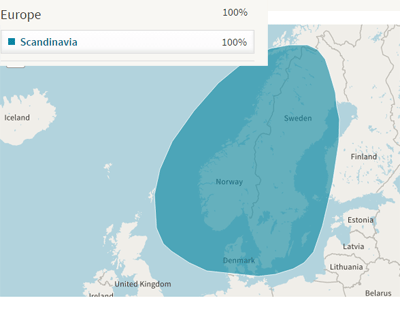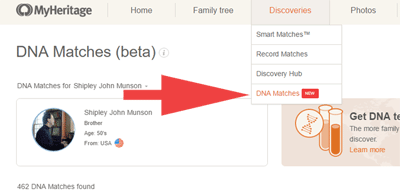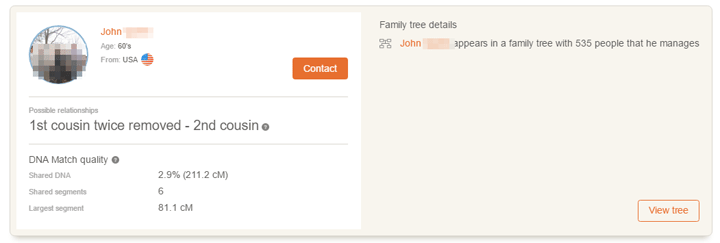This is the first time I have had a cousin’s DNA test come out showing an ancestry composition that was 100% a single ethnicity. My cousin J.M. was not in the least bit surprised as she expected to be all Scandinavian. Five of her eight great-grandparents were born in Norway and the other three were born in the U.S.A. to Norwegian immigrants. But I was quite surprised because there is usually at least a trace of something else.
 She shares my Norwegian born Munson (Monsen) great-grandparents as her great-great-grandparents making us 2nd cousins once removed. She tested at AncestryDNA to help me figure out where a related adoptee might fit in (no luck on that). The fact that she has a genetic genealogist for a cousin who would tell her what it all meant helped convince her as well.
She shares my Norwegian born Munson (Monsen) great-grandparents as her great-great-grandparents making us 2nd cousins once removed. She tested at AncestryDNA to help me figure out where a related adoptee might fit in (no luck on that). The fact that she has a genetic genealogist for a cousin who would tell her what it all meant helped convince her as well.
I usually send cousins to my page comparing all the autosomal tests and let them choose. However I prefer Ancestry.com DNA testing for the interested, but non-genealogically serious, relatives who are online because it is so easy to see the relationships and use the green leaf hinting system. Also I was tired of having only one circle and her test would give me a second one. Those with colonial ancestry have plenty of circles and NADs (New Ancestor Discoveries) but we recent immigrants (1870s and 1880s) are lucky to have any. Last but not least, it was the cheapest test at the time she ordered it.
Now why is she perfect? It is not just the 100% Scandinavian but amazingly her top four matches are all second cousins from different pairs of great-grandparents! I have never seen that before either. Of course most of my tested relatives being from relatively recent immigrants, have no second cousins and almost no thirds showing at Ancestry .
Here are J.M.’s matches:




